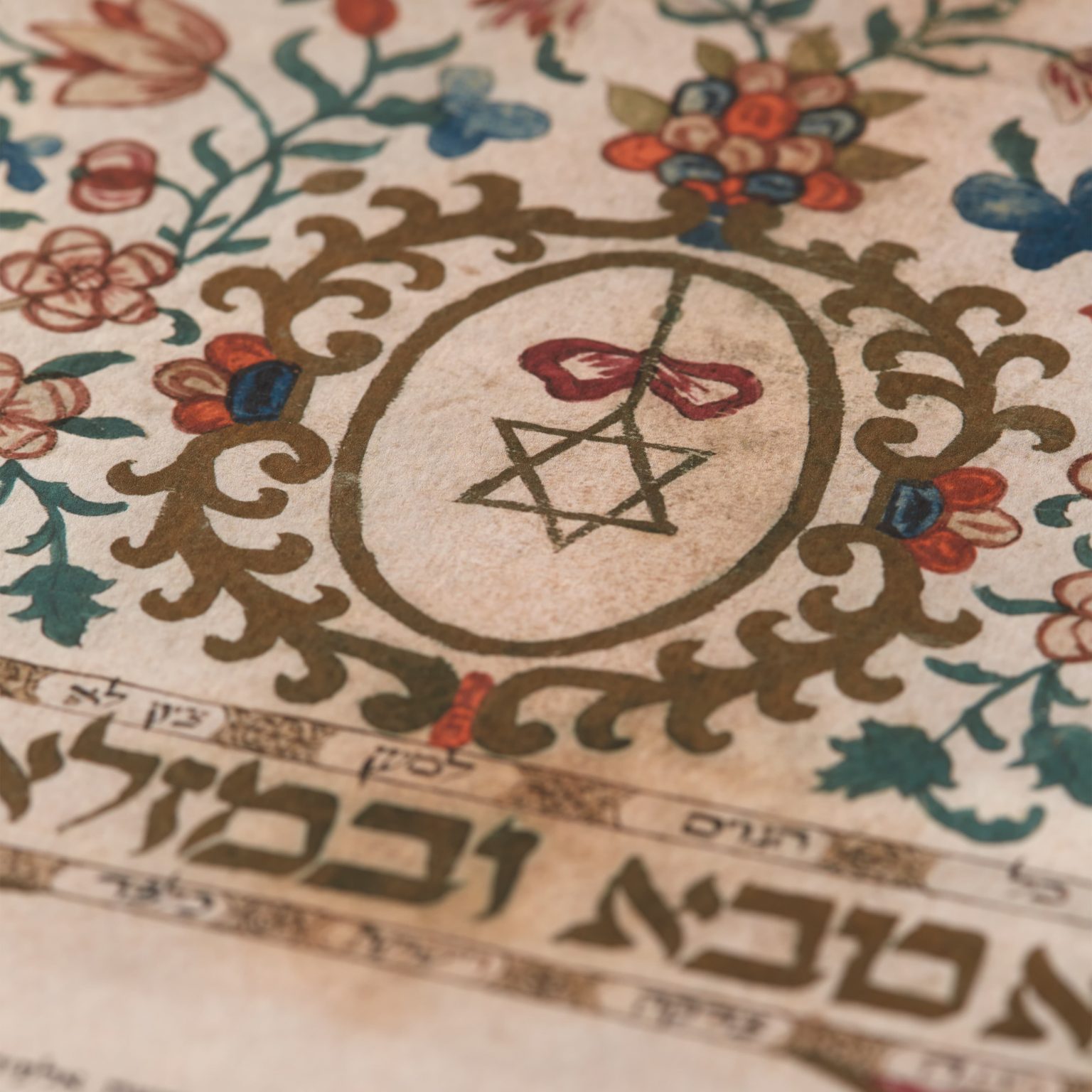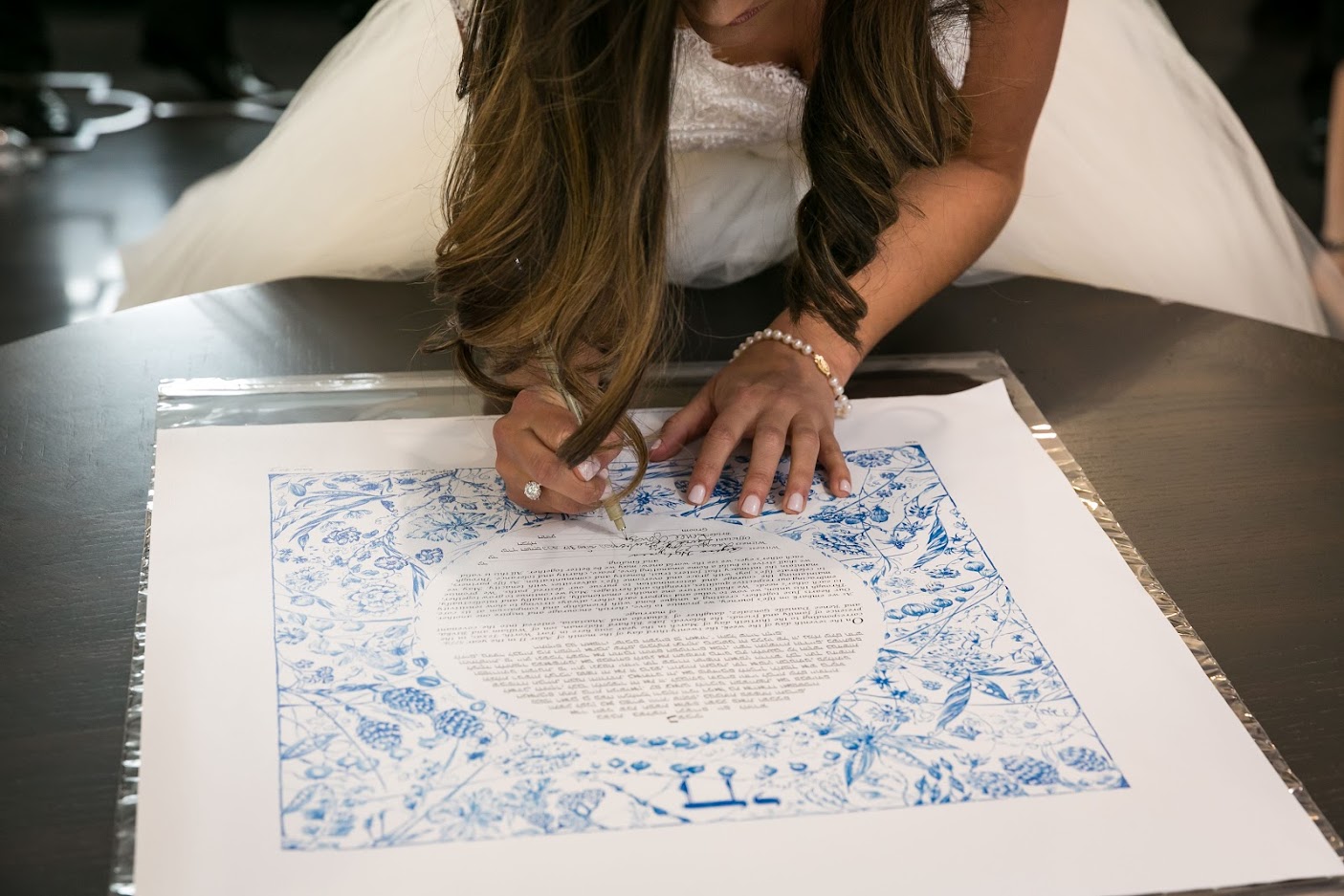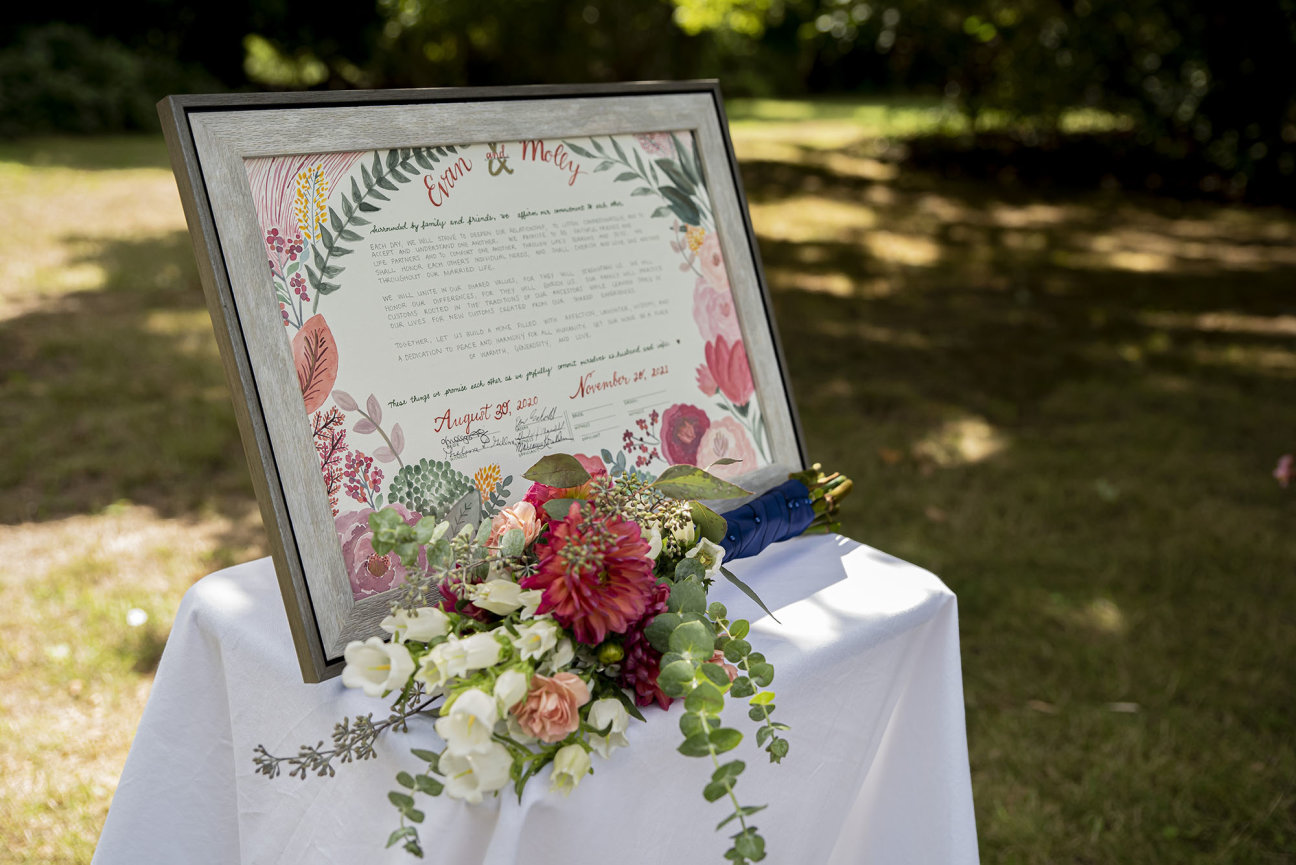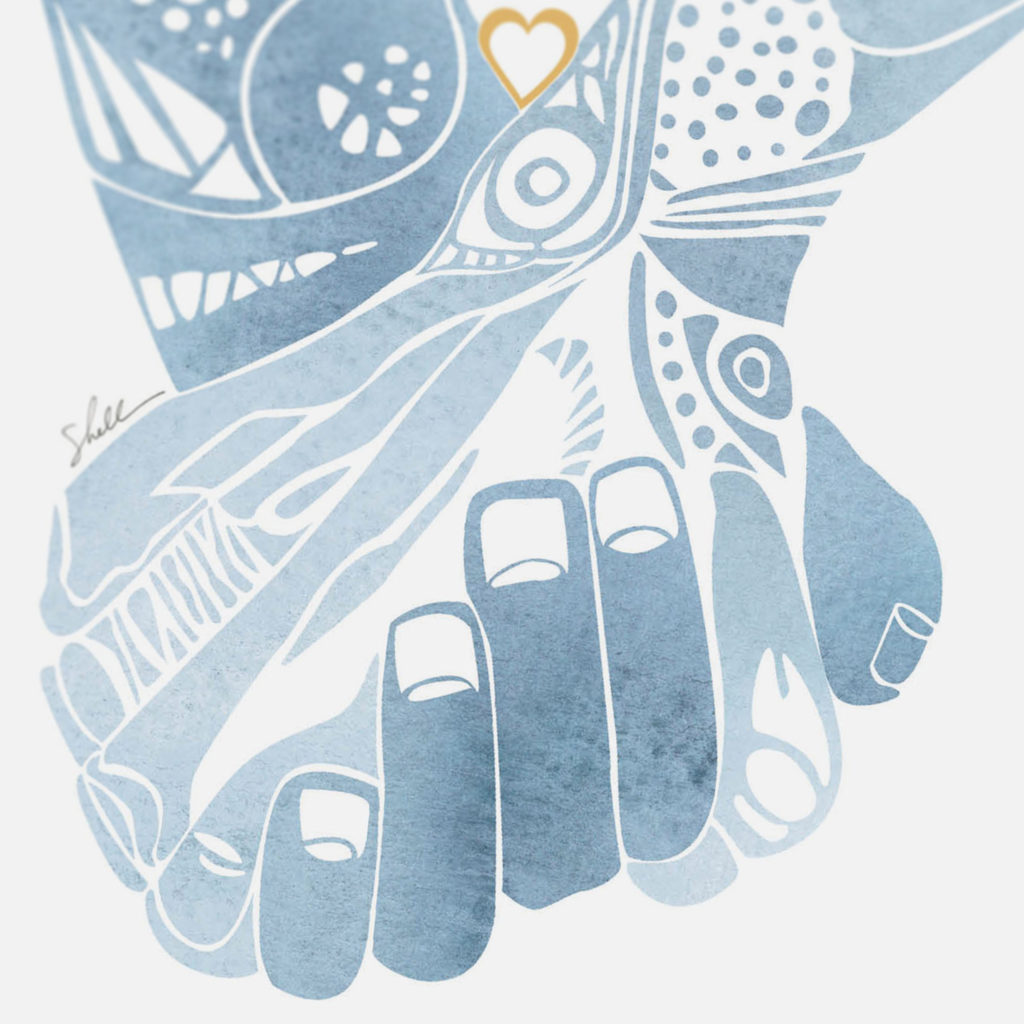
There are so many details couples need to double and triple check when planning a traditional Orthodox Jewish Wedding – including your ketubah. The Aramaic text is fairly standardized but like everything else, you need to make sure that it is correct and kosher. Ketubah.com has worked on thousands of ketubahs over the past 21 years and worked with hundreds of different rabbis. Let us help you answer some of the most common questions we get regarding Orthodox Jewish Ketubahs.
What Makes A Ketubah Kosher?
Let’s start with two of the most important things that make an Orthodox Ketubah “Kosher”:
Text & Shape
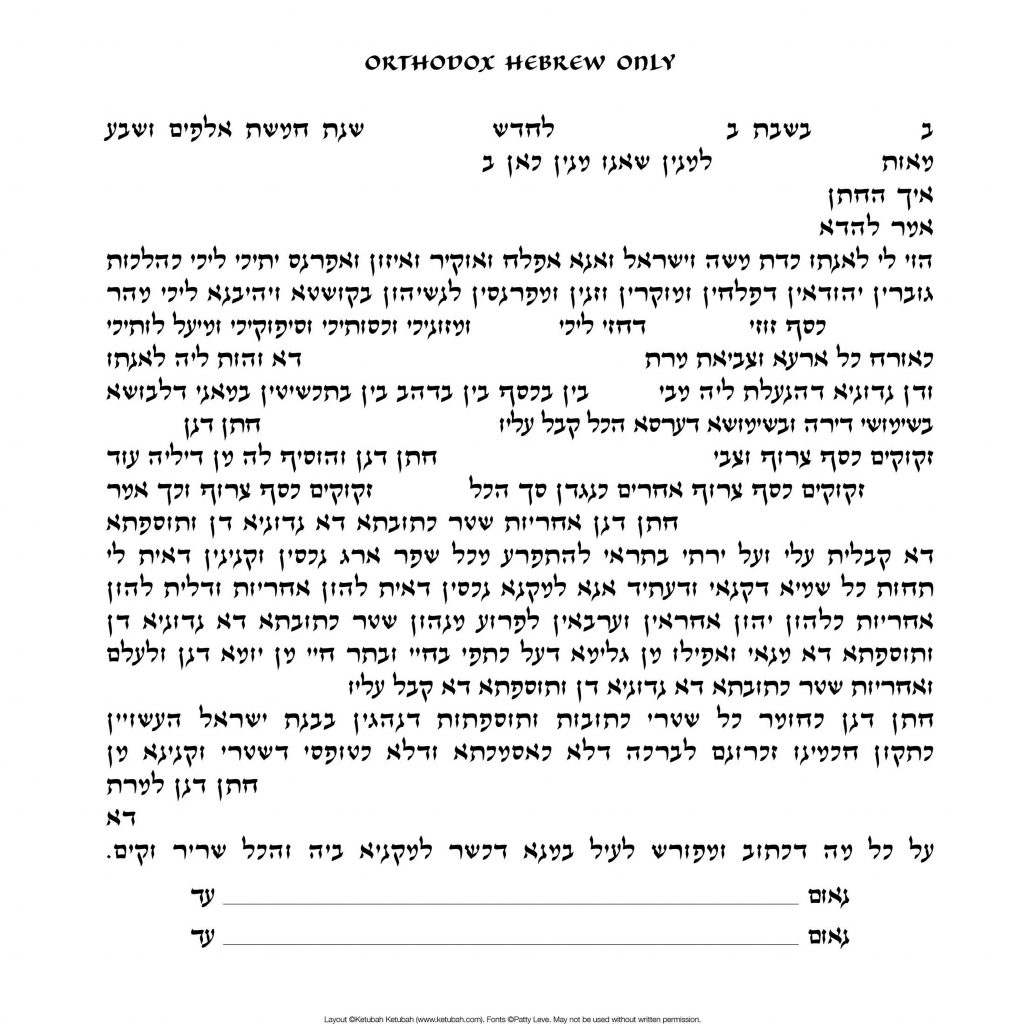
The text for an Orthodox, traditional, Jewish wedding is the standard Aramaic Ketubah text. Now this can differ for Sephardi weddings (Read more for this in our post 5 Things To Know About Sephardic Ketubah Texts) and Israeli weddings. For pretty much all Orthodox traditional weddings, the most halachically kosher, English would not be included. If this is something you want, we highly recommend you speak to your rabbi before ordering the ketubah.
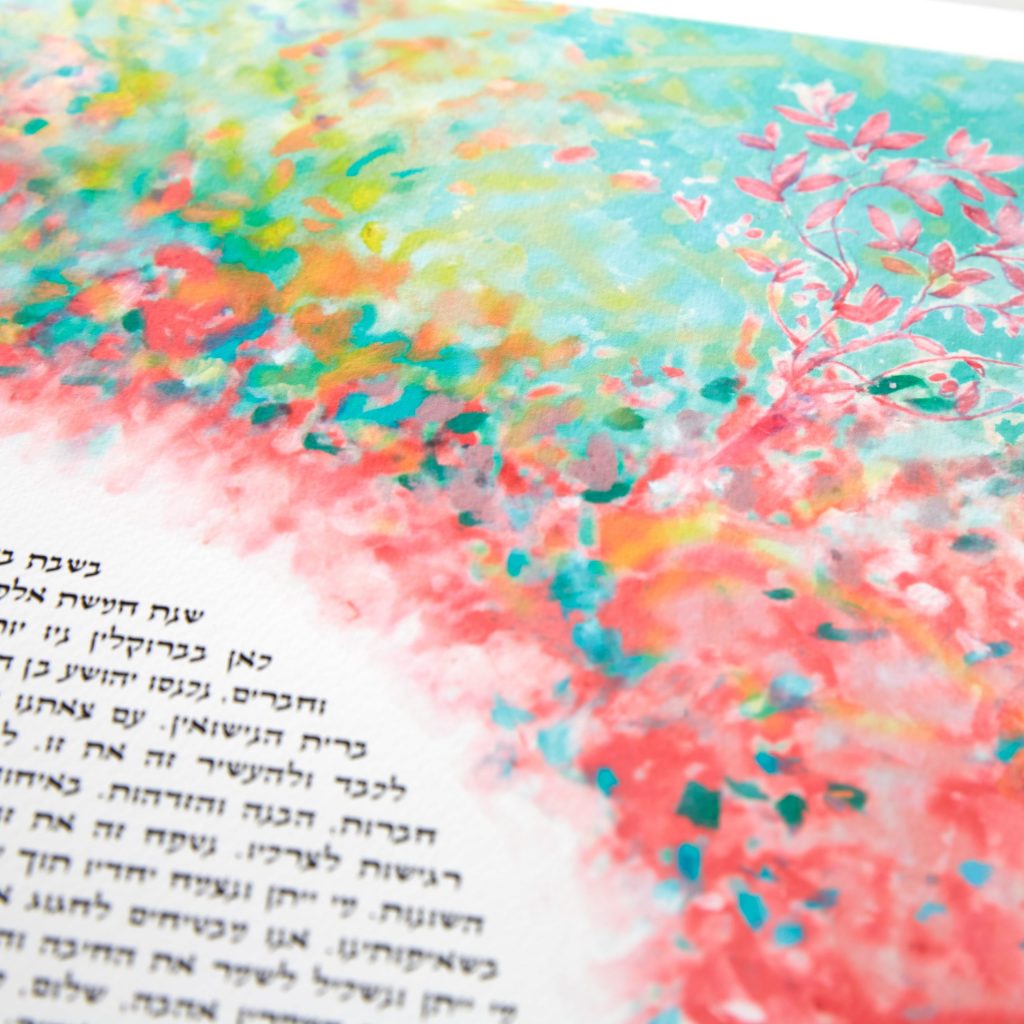
According to Chabad.org “It is not a ceremonial document of scripture or prayer. That is why it is written in Aramaic, the technical legal language of Talmudic law, rather than in Hebrew, the language of the “Song of Songs.””
Ketubahs can be written in a variety of shapes; circular, arched, square, however there are exceptions. It is very important to Orthodox rabbis that the ketubah text not be broken up in spaces and that there be no extra room for anyone to (G-d forbid, chas v’shalom) add in any wording.
After the 2 witnesses sign the ketubah, often, the rabbi will write in a line to the end of the signature line. Just like you do when you write a check for the same reason!
A Common Request
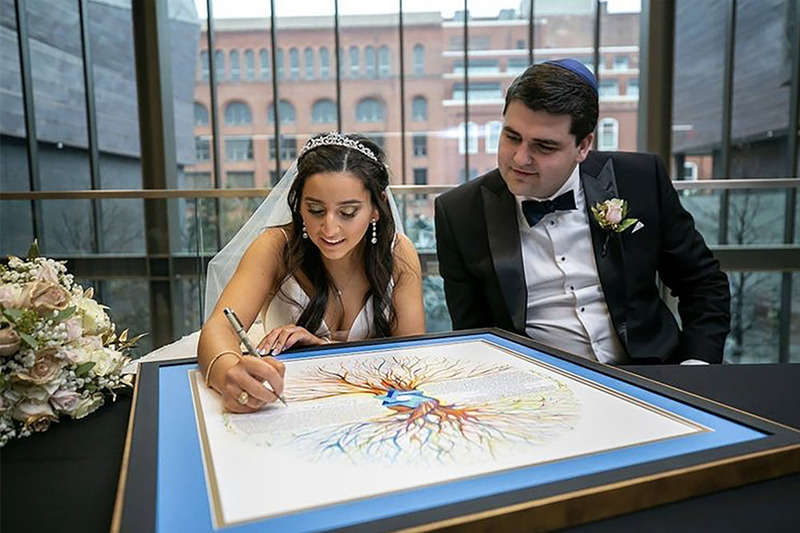
One of the most common requests we get from rabbis is to leave out the regel of kuf in the word קנינה at the end of the ketubah. This is because some rabbis prefer to complete the ketubah text by hand on the day of the wedding. Don’t worry! We get this all the time and can easily be accommodated.
Signatures & Witnesses
Unlike other ketubahs, the Orthodox ketubah is only signed by 2 male, “kosher” witnesses. The requirements for choosing these witness is the following;
- They are both male
- That they are not biologically related to the bride or groom (so they can’t be your brothers or parents).
- They must be shomer shabbat, meaning Sabbath observant.
A traditional ketubah isn’t even signed by the rabbi or the bride and groom. That is because it is actually a halachic contract outlining the groom’s commitment to the bride which is then signed by two deemed witnesses. By them signing the ketubah they are stating that they have read (heard) the agreement and have seen the groom hand the contract to the bride. By the groom giving the ketubah to the bride that is their understanding that they agree to the terms of the ketubah.
Why Do Couples Display Their Ketubah and Others Don’t?
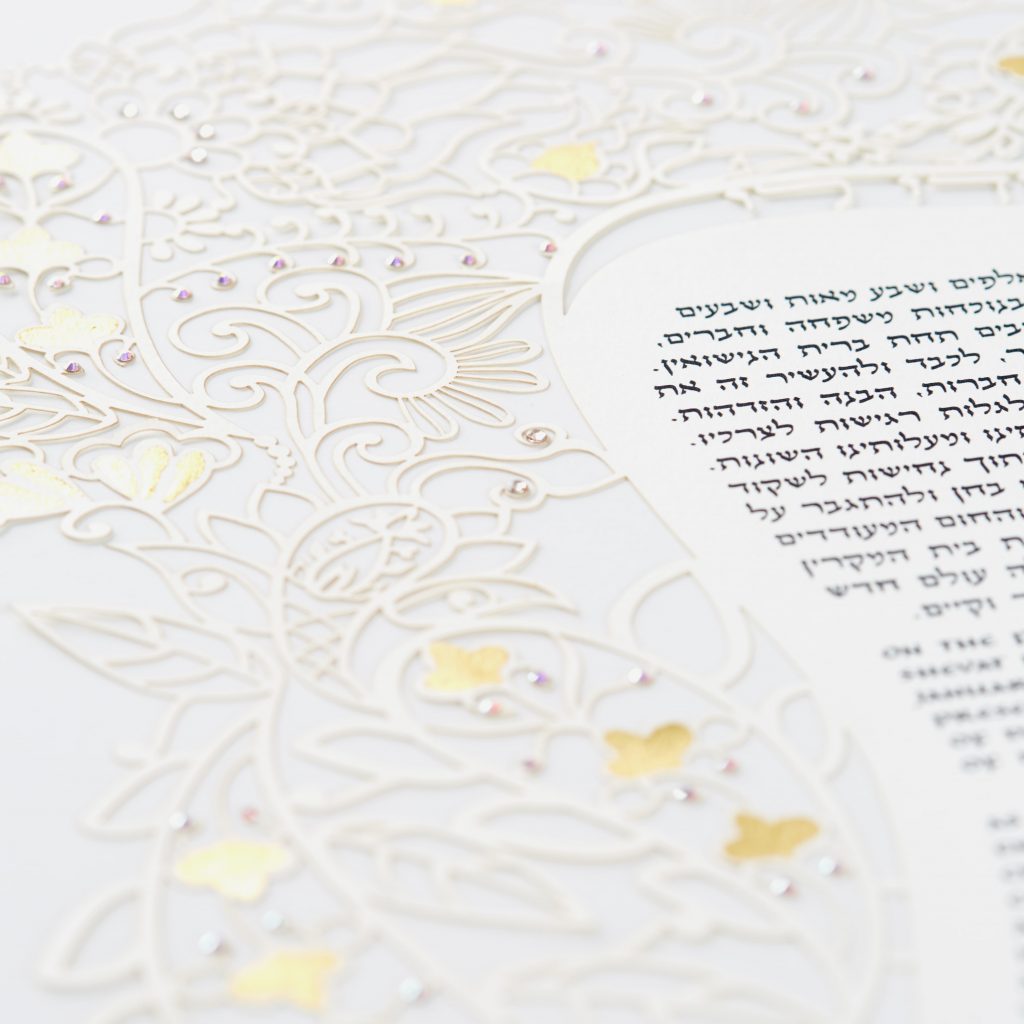
Some people choose not to display their ketubah, as they do not want the husband to steal it and claim he never gave one (again, 2 witnesses help combat this). Some couples feel the ketubah is strictly a contract rather than art.
For decades though we have seen art ketubahs from all over the world dating back as far as the 1600’s. Our Jewish Museum Collection is an extraordinary example of ketubahs that can be used today. Today, many couples choose an art ketubah in a variety of styles from intricate papercuts to modern designs, that are displayed in their home. This way they always know where their ketubah is and it reminds them of their wedding day and commitment to one another.
Information You, Your Rabbi and Ketubah.com Will Need:
- The Wedding Date
- If you only have your English wedding date, ie. Sunday, May 20th, 2018, Ketubah.com’s easy to use personalization form can convert the English date into Hebrew. The important question will be – is the chuppah ceremony taking place before or after sunset! You can check on Google what time sunset will be on the day of. If there chuppah ceremony is taking place during the day time/before sunset it will be the same Hebrew calendar day. But if the chuppah is taking place after sunset the Hebrew date will say it is technically the next day because the Jewish calendar is lunar.
- The bride and groom’s Hebrew names. These are made up of your given Hebrew name and your father’s Hebrew name. For example; Aliyah Rivka daughter or Yosef Chaim and Zvi Yosef son of Moshe.
- Most Orthodox ketubahs do not include last names but check with your rabbi if this is something they wish to include.
More interesting facts about the Orthodox Ketubah you may not know:
- There is no mention of G-d in the text. That is because it is an outline of the marital agreement of requirements from the groom to his bride.
- The ketubah outlines that the groom must take care of his bride throughout their marriage in shelter, food, clothing, and even sexual fulfillment.
- It also includes a husband’s requirement to pay a certain sum in the event of divorce. As well as inheritance in case of the unfortunate event that he die before his wife.
- Misconception: the ketubah is NOT a sale of the bride from her father to her husband! He is by no means purchasing his wife, rather the ketubah lays out his obligations as a proposal to her and she must accept knowingly and fully understanding that acceptance. The 2 witnesses are witnesses to the groom agreeing to these terms and witnessing the bride accepting these terms.
- You must know where your ketubah is at all times!
Still have questions about Orthodox and traditional ketubahs? Please leave them in the comments below and we will be happy to address them!
